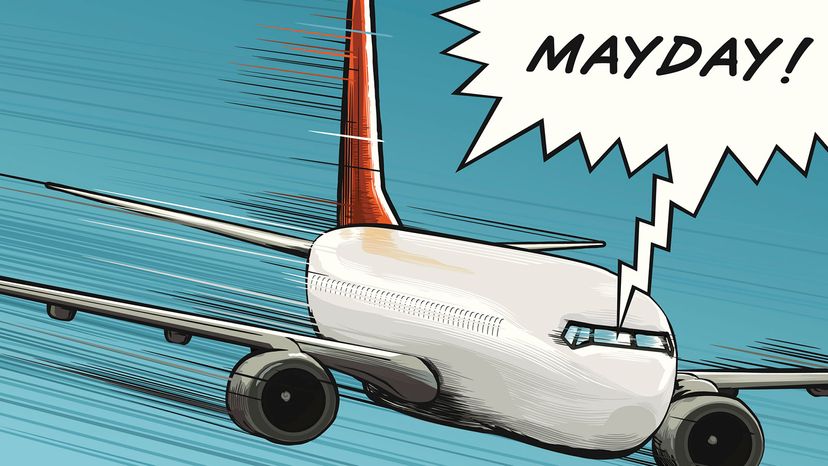Frederick Stanley Mockford, a senior radio officer in London, was put in charge of finding a good distress signal. He reasoned that because so much of the air traffic flew between Croydon and Le Bourget Airport in Paris, it might make sense to use a derivative of a French word.
He came up with "mayday," the French pronunciation of "m'aider" ("help me"), which itself is a distilled version of "venez m'aider," or "come help me." The U.S. formally adopted "mayday" as an official radiotelegraph distress signal in 1927.
Due to radio interference and loud ambient noise, pilots are told to repeat the word three times: "Mayday, mayday, mayday." The repetition also serves to help radio operators distinguish the transmission from others that simply refer to the mayday call.
Although these can be panic-filled situations, the Federal Aviation Administration encourages pilots to offer information in the following order so that emergency responders know exactly what they're dealing with:
- MAYDAY, MAYDAY, MAY-DAY
- station addressed
- aircraft call sign and type
- kind of emergency
- weather
- pilot's intentions
- current position and heading
- altitude
- fuel remaining in minutes
- number of people onboard
- other pertinent details.
Given its importance, most people respect the mayday signal and use it only when absolutely necessary. Sadly, the Coast Guard occasionally deals with hoax calls, owing in large part to the virtually untraceable VHF radio signals it uses to receive distress signals.
As a result, hundreds of thousands of dollars and countless man-hours may be wasted trying to rescue people who were never in danger. People who abuse this system can be jailed for up to 10 years and fined $250,000.
